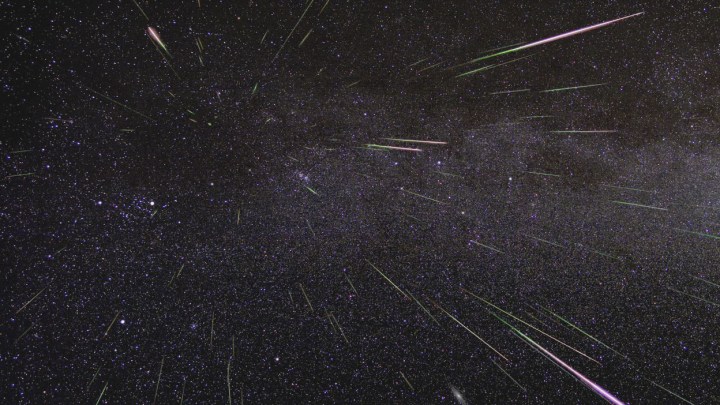
This weekend marks the peak of the first meteor shower of the year, the Quadrantid meteor shower. With between 60 and 200 meteors per hour whipping past at speeds of up to 25 miles per hour, this event is known for its “fireball meteors” which burn brightly and persist for longer than a typical meteor as they are caused by larger than average pieces of material.
Meteors are chunks of rock or other substances which have broken off from a larger body like an asteroid and entered Earth’s atmosphere. Meteors are often clustered in showers as they come from a common source — in this case, they originate from asteroid 2003 EH1. As they enter into the Earth’s atmosphere they burn up, which is what causes the bright and sometimes colorful streaks in the sky that we call meteor showers.
The Quadrantid shower is unusual in that, unlike most meteor showers which peak for several days, it peaks for just a few hours. So if you want to catch a glimpse of this event, you need to go and observe it tonight.
Unfortunately, there will be a bright moon tonight though, so the moonlight may outshine the meteors. But depending on where you are on the globe, you may still be able to catch a glimpse of the shower if you look up during the night.
If you want to watch the meteor shower for yourself, then NASA has advice on how best to catch it:
“The Quadrantids are best viewed in the Northern Hemisphere (this shower can also be seen at latitudes north of 51 degrees south) during the night and predawn hours. To view the Quadrantids, find an area well away from city or street lights. Come prepared for winter weather with a sleeping bag, blanket, or lawn chair. Lie flat on your back with your feet facing northeast and look up, taking in as much of the sky as possible. In less than 30 minutes in the dark, your eyes will adapt and you will begin to see meteors. Be patient — the show will last until dawn, so you have plenty of time to catch a glimpse.”



